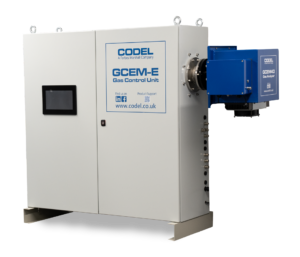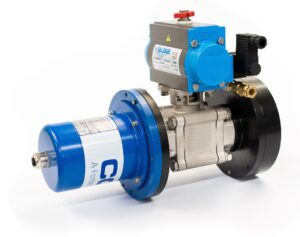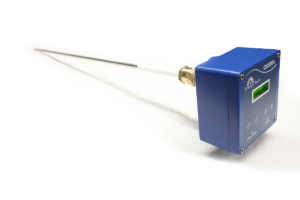Key Components of a Continuous Emission Monitoring System and Their Functions

Continuous Emission Monitoring Systems (CEMS) are crucial for maintaining air quality and ensuring regulatory compliance in industrial processes. These systems collect, record, and analyse emissions data, measuring pollutants such as CO2, SO2, NOx, and particulate matter in real-time to minimize environmental impact.
Key Components
A key component of a CEMS is the gas analyser. Gas analysers detect and measure specific gas concentrations in emissions. CODEL’s GCEM40E extractive gas analyser is particularly effective for difficult applications with extreme flue gas temperatures. Its multi-channel capability ensures superb accuracy and repeatability for both process and emissions monitoring. Sample probes and conditioning systems are essential parts of a CEMS. Sample probes extract gas samples from the flue gas stream, withstanding high temperatures and harsh conditions. The extracted samples are then prepared for analysis by the sample conditioning system, which cools, filters, and dries the samples to ensure accurate measurements by gas analysers.
Data Collection and Calibration
Data acquisition systems collect and store emissions data from gas analysers, providing real-time data analysis and generating reports for regulatory compliance and operational optimization. Regular calibration of CEMS is necessary to maintain measurement accuracy. Automatic calibration systems, compared to manual ones, offer more convenience and consistency. Emission sensors, such as CODEL’s DCEM2100 Dual Pass Opacity / Dust Monitor, measure opacity and dust concentration in flue gases. The DCEM2100 continuously measures the transmissivity of visible light across a duct or stack, ensuring precise dust loading measurements and assessing misalignment errors due to stack movement. Gas velocity monitors, like CODEL’s VCEM5100, measure stack gas velocity using a time-of-flight measurement derived from cross-correlation analysis of infrared emissions, providing robust and reliable data.
Operation and Applications
CEMS operate by extracting gas samples, conditioning these samples, analysing them with gas analysers, collecting and storing data with acquisition systems, and regularly calibrating the system to ensure accuracy. These steps work together to provide continuous and precise emissions monitoring. CEMS are used in power plants, cement kilns, waste incinerators, and petrochemical facilities to monitor and control emissions. They help industries comply with environmental regulations by providing accurate and reliable data for reporting purposes. Continuous monitoring also assists in assessing the environmental impact of industrial activities and implementing measures to reduce pollution.
Benefits
The benefits of using a CEMS are huge. These systems provide precise and reliable emissions data, essential for regulatory compliance and environmental protection. By optimizing industrial processes and reducing emissions, CEMS can lead to significant cost savings in terms of fuel consumption and regulatory fines. Additionally, they ensure continuous compliance with stringent environmental regulations, helping industries avoid potential legal and financial penalties. Leveraging advanced technologies like CODEL’s GCEM40E, DCEM2100, and VCEM5100, industries can monitor and reduce emissions effectively.
CEMS Dust Monitors
The DCEM2100 dust monitor provides a continuous measurement of opacity or dust concentration in flue gases by continuously measuring the transmissivity of visible light across a process duct or stack.
The EnergyTech 301 is a low cost dust monitor using well-proven tribo electric technology providing accurate and rapid results. The EnergyTech 301 requires no critical alignment and has no optical surfaces to keep clean.



